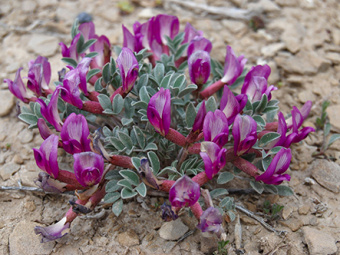Популярное
- XXVI Regional Music Festival “Our Hopes” Opens in Dagestan
- Dagestani Taekwondo Athlete Wins Silver at World Junior Championship
- Dagestani Wrestler Claims Gold at Russian Youth Championship
- Large-Scale Modernization of Rehabilitation Centers Underway in Dagestan
- Landmark Archaeological Exhibition Opens in Makhachkala, Showcasing Dagestan's Ancient Past
- Dagestani Folk Ensemble ‘Imamat’ Performs at Summit in India
- Modern Approaches in Gastroenterology Discussed at All-Russian Conference in Dagestan
- First-Ever Hybrid Surgery Performed in Dagestan
- "Our Hopes" Music Festival Gains All-Russian Recognition
- Dagestan State University Becomes Hub for Addressing Caspian Challenges
Five plant species new to Russia discovered in Dagestan
|
|
5326
1 минута
During extensive botanical research conducted in Dagestan, scientists from the Caspian Institute of Biological Resources affiliated with Dagestan Federal Research Center of the Russian Academy of Sciences have identified five previously unrecorded plant species within the region. These discoveries were made as part of a state-funded initiative to comprehensively assess the region's biological diversity.
Among the newly identified species are Astragalus finitimus (finite astragalus), Delphinium cyphoplectrum (humpback larkspur), Rusty fimbristis, Monspellian hystode and desert tar. These plants inhabit diverse ecosystems, ranging from coastal steppes to foothill and mountainous regions.
Dr. Ramazan Murtazaliev, Head of the Laboratory of Soil and Plant Resources at the Caspian Institute, highlights the significance of these findings in deepening our understanding of Dagestan's unique natural heritage. He emphasizes that the region's varied climatic and topographical conditions foster a rich tapestry of plant communities, positioning Dagestan as a biodiversity hotspot within Russia.
Currently, over 3,500 vascular plant species have been documented in Dagestan, underscoring the region's exceptional biodiversity. The Laboratory continues its ongoing research into the region's flora, with particular focus on rare and endangered species and the evaluation of natural ecosystem health.
The discovery of novel taxa not only advances scientific knowledge but also informs conservation efforts. Some of the identified species may be classified as rare or requiring protection, necessitating targeted measures to ensure their long-term survival.
Photo by dizajn-sada.ru








